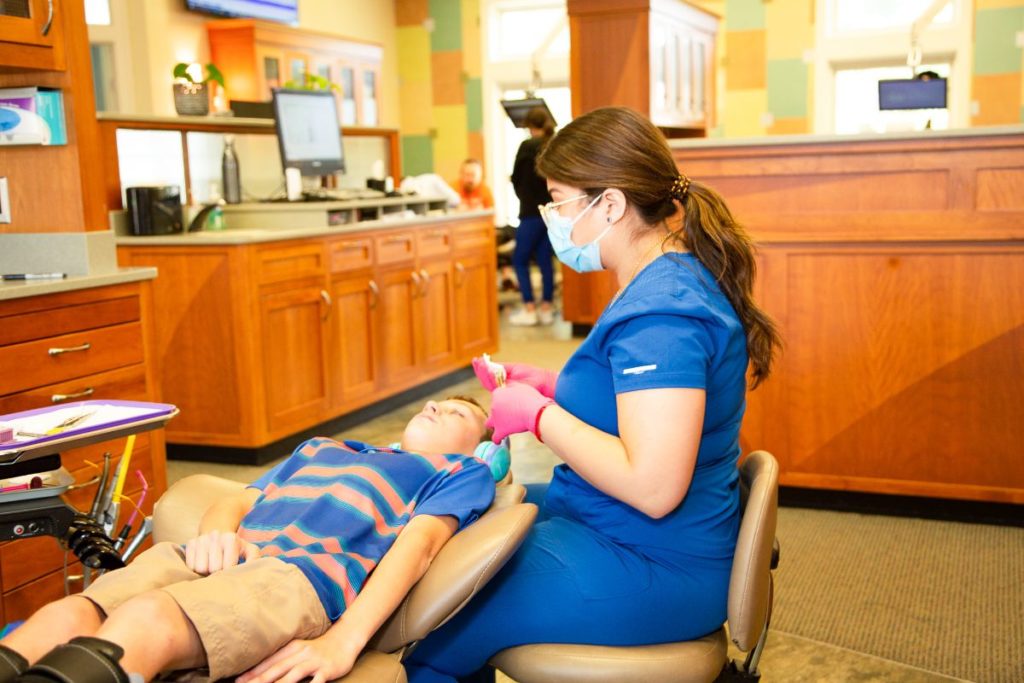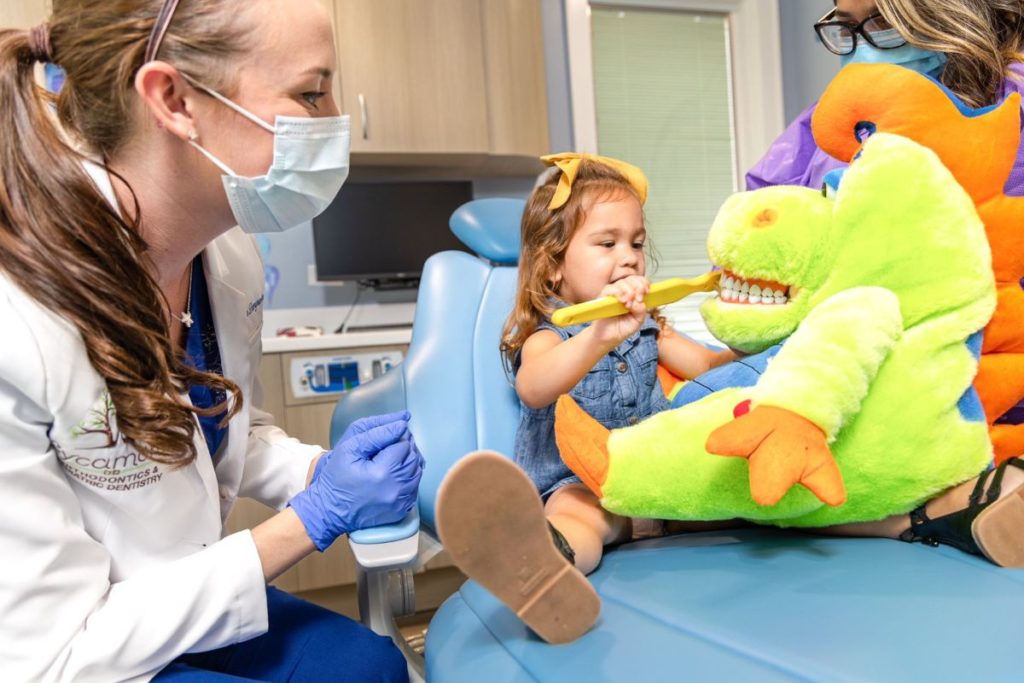Everyone wants a straight smile! For decades, orthodontic treatment has been an essential coming-of-age rite for children, teens, and adults alike. As a parent, getting braces for your child may seem like a no-brainer, but you might be scratching your head, wondering when it’s the best time to start. Don’t worry — Sycamore Orthodontics & Pediatric Dentistry has you covered!
According to the American Association of Orthodontists (AAO), every child should visit their orthodontist by age seven for their first orthodontic check-up. That may seem early, but the reasons behind this standard make perfect sense.
If you want to learn what makes seven such a critical orthodontic age, keep reading!
Their First Visit
When you bring your child in for their first orthodontic appointment, our Sycamore Orthodontics team will spend time getting them used to the orthodontic office so they’ll feel comfortable in our Sycamore office. Then we’ll assess their unique condition and needs. Early intervention helps Dr. B and Dr. Sarah:
- Guide your child’s jaw growth
- Correct bad habits like thumb-sucking
- Lower the risk of trauma
- Improve your child’s overall health
Guiding Growth: Two-Phase Treatment
Not all patients require early intervention, but for those who do, early treatment allows Dr. B and Dr. Sarah to give your child a head start in caring for complex issues that could get worse with age. Two-phase treatment breaks orthodontics into a longer and more comprehensive process than older patients receive. This slow and steady approach treats developing issues and gives your child a long-term smile they’ll be proud of.
Phase I
Phase I treatment works best when your child’s baby teeth are still present. During this first round, our goal is to guide their baby teeth in line so that their permanent teeth follow their lead when they grow in.
If your child requires phase I treatment, our Sycamore Orthodontics team will design a unique treatment plan tailor-made to meet their needs. Treatment options may include expanders for overbites, a Herbst appliance for underbites, or even an early round of metal braces.
For most patients, phase I treatment lasts between six and twelve months. However, this timeline varies from patient to patient, depending on their unique needs.
Retention
After phase one treatment is complete, your child will enter a rest phase called retention. They’ll wear a retainer to keep their teeth in position. This resting period gives your child’s permanent teeth the chance to grow, following the path of their baby teeth. They’ll also meet with Dr. B or Dr. Sarah every six to twelve months so that our team can monitor their progress to determine whether phase II treatment will be necessary.
Phase II
Now that both Phase I and the retention phase are complete, you should already see progress in your child’s smile. Phase II treatment looks much more like the traditional treatment you see during the teenage years. Dr. B or Dr. Sarah typically apply metal braces to the top and bottom teeth. This process helps fine-tune your child’s smile, giving them results that will last a lifetime.

Reasons to Start Treatment Early
When Dr. B and Dr. Sarah assess your child’s orthodontic condition at their first appointment, there are a number of different reasons they might recommend early treatment. Your child might benefit from an early start if we recognize the following conditions at their initial appointment.
Misalignment
Correcting crooked teeth at an earlier age can improve a child’s oral health and help them avoid the above issues. While we can align teeth at almost any age, doing so at a younger age can make for an easier and more effective treatment process. Crooked teeth are more susceptible to wear and tear, and over time, the shape and position of the surrounding gum tissue can be compromised.
Crowding or Spacing
By the time a child is ready for their first orthodontic evaluation, it will be possible to tell if they currently have or may develop excessive crowding or spacing issues. Spacing issues can arise over a tooth lost prematurely, one that never developed, teeth that are too small, or those spaced far apart. Crowding could require expanding the arches or removing teeth to improve the situation.
Tooth Loss or Eruption
It’s easy to underestimate the importance of baby teeth, but as the placeholders for our permanent teeth, they matter more than you might think. Since they tend to fall out in a fairly specific order, any significant deviation from this pattern could signify there are developmental issues that may need attention. By age 7, children should also have at least four permanent molars and two to four permanent incisors. If there are more or less than these present, it could indicate a problem with missing, crowding, or extra teeth. Sometimes removing a primary tooth early or maintaining a space where a tooth has been lost prematurely can prevent bigger problems later.
Overbite or Protruding Teeth
Teeth that protrude are generally evident in early childhood. These are often seen as a cosmetic concern, but the effects of an overbite pattern go beyond the appearance of the teeth. Children may experience pain in the jaw and excessive tooth wear, and they can even have trouble with normal speech patterns.
We’ll usually need to wait until a child’s mouth has matured before attempting to correct an overbite. However, several treatment options still exist for reducing the risk of pain and traumatic injury as they grow. These corrective measures can also improve a child’s confidence in their smile!
Underbite
When a child has an underbite, we need to determine whether the malocclusion is caused by problems with the eruption of the teeth or by the relationship of the jaws. As with an overbite, we’ll sometimes need to wait until the patient has finished growing to begin comprehensive treatment. However, earlier measures can be taken to help avoid damage to the front teeth and encourage skeletal correction. Underbite patients who receive treatment between the ages of about seven to ten tend to be less likely to need corrective jaw surgery when they are older.

Choose Sycamore Orthodontics & Pediatric Dentistry
If you’ve been searching for your dental home in Sycamore, IL, you’ve come to the right place! By combining dentistry and orthodontics, we make it easy for you to care for your child’s teeth.
Is your child turning seven? Schedule an appointment for their first orthopedic checkup today!
